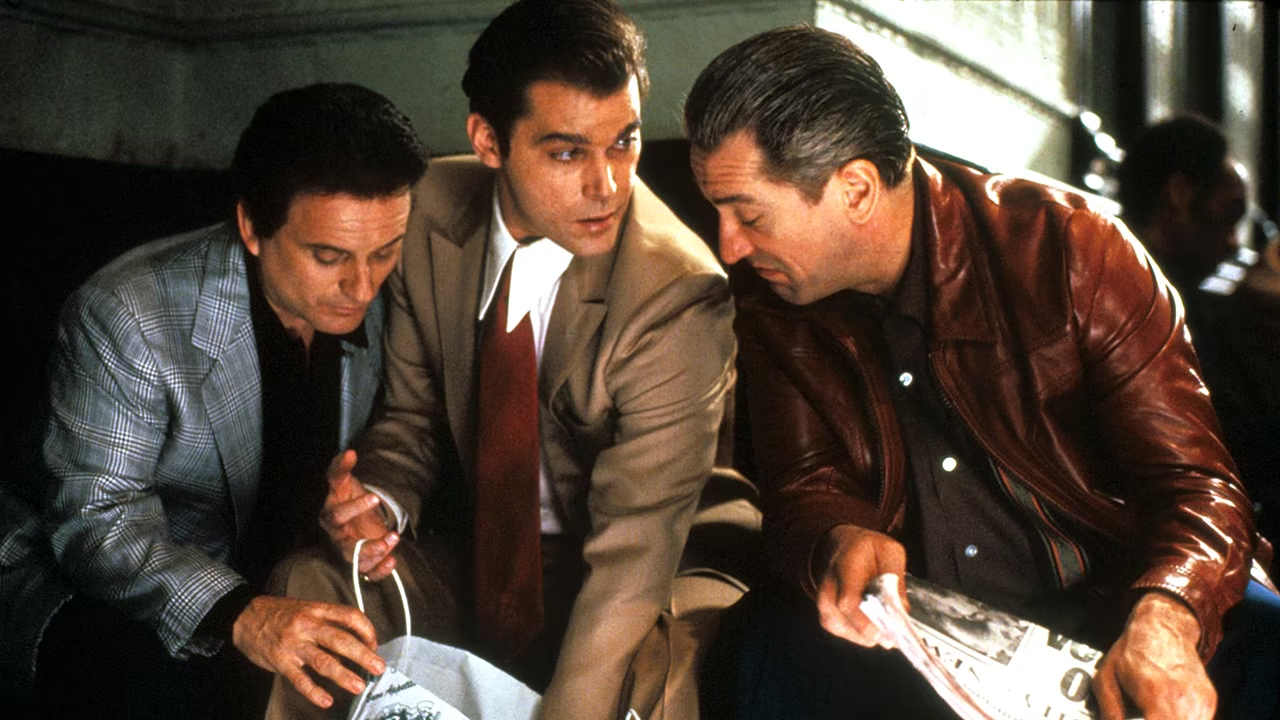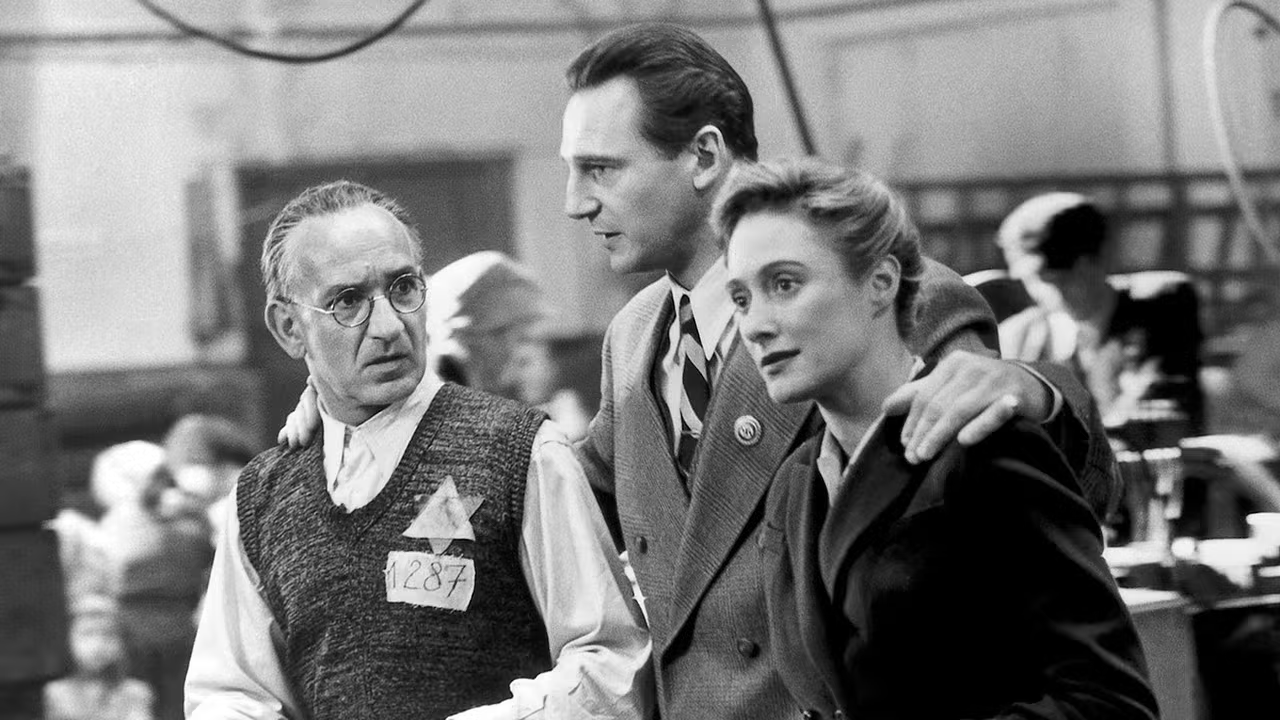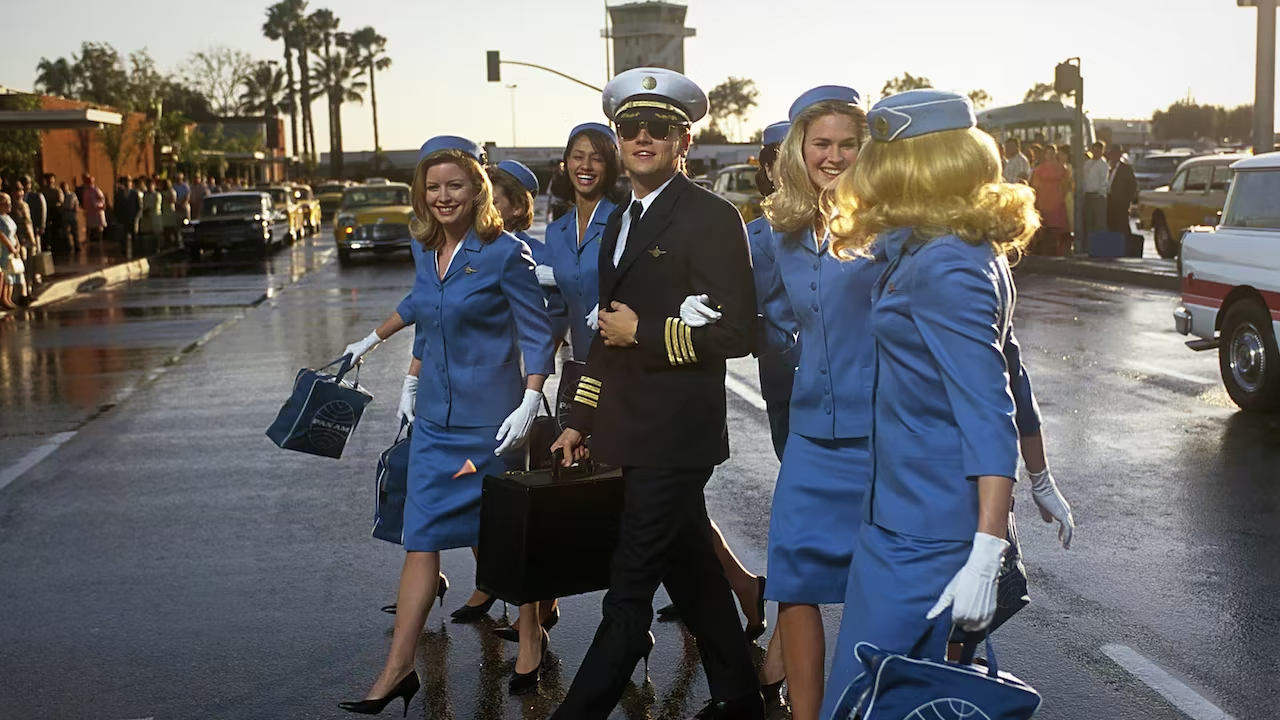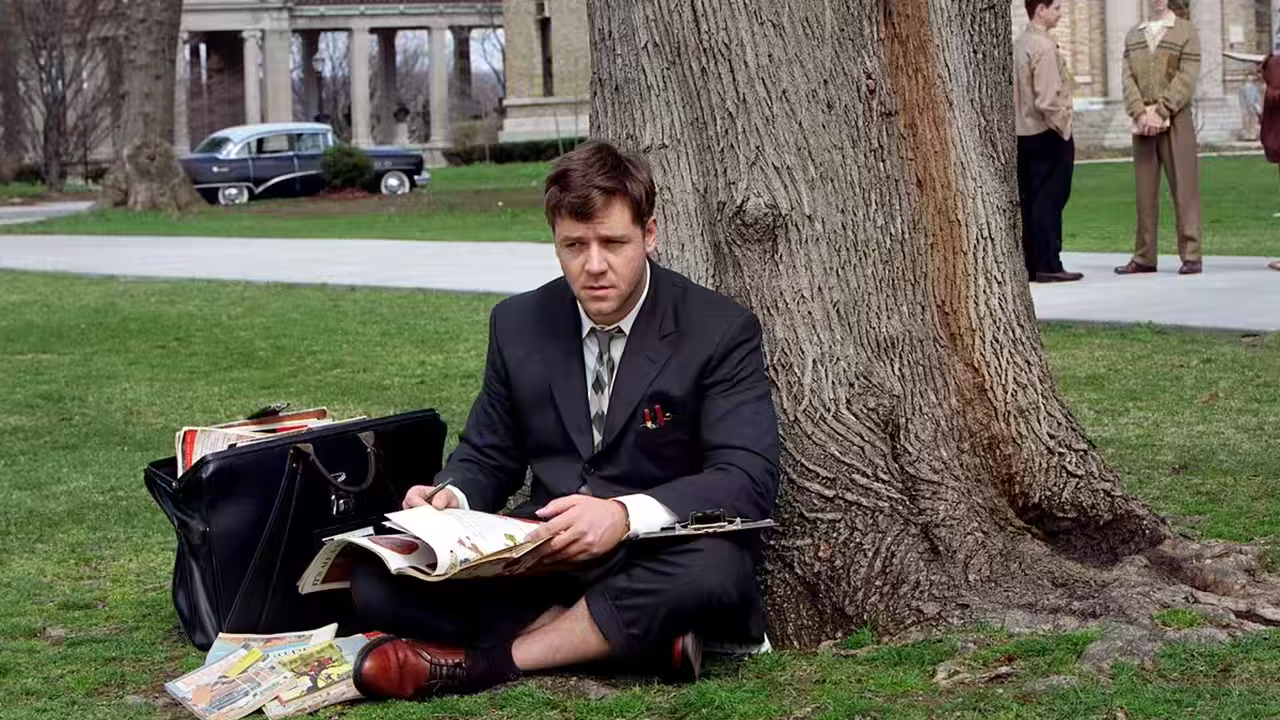
Ron Howard’s 2001 film A Beautiful Mind masterfully portrays the harrowing intersection of genius and mental illness through the life of mathematician John Nash, revealing how the same brilliant mind that revolutionized economic theory ultimately betrayed its owner with vivid delusions. The film, which garnered four Academy Awards including Best Picture, dramatizes Nash’s tumultuous journey from his promising beginnings to his diagnosis with paranoid schizophrenia, and finally to his triumphant receipt of the 1994 Nobel Prize in Economics. Unlike typical biographical dramas, Howard’s film immerses viewers within Nash’s subjective reality, blurring the line between perception and hallucination until the devastating moment when that reality shatters, forcing both protagonist and audience to question everything previously accepted as truth.
The real-life Nash developed the groundbreaking concept of Nash equilibrium in non-cooperative game theory at Princeton University in 1950, transforming how economists understand strategic interaction and decision-making. His work has since influenced fields ranging from evolutionary biology to international relations and artificial intelligence. While the film takes creative liberties with Nash’s story—condensing his hospitalization timeline and simplifying his complex relationships—it authentically captures the essence of his resilience in overcoming severe mental illness. The narrative demonstrates that Nash’s ultimate victory came not through medication alone but through human connection, particularly through his wife Alicia’s unwavering support, challenging perceptions about recovery from schizophrenia and highlighting the redemptive power of love against seemingly insurmountable odds.
Brilliant Mind Seeks Originality
The film opens with Professor Hellinger (Judd Hirsch) welcoming new Princeton University graduate students and encouraging them to emulate their brilliant mathematical predecessors. At the reception, John Nash awkwardly tries to socialize with his new colleagues. His belief that mathematics explains everything leads him to suggest a mathematical reason for a classmate’s bad tie.
John’s social awkwardness is immediately apparent. While fellow students introduce themselves and their published research, John remains unintroduced until Martin Hansen (Josh Lucas) approaches him. John recognizes Hansen and wastes no time critiquing his research, bluntly stating there isn’t a single original idea in either of his pre-prints. The uncomfortable exchange prompts John to walk away. Ironically, Hansen later introduces John as “the mysterious genius from West Virginia,” his co-recipient of the prestigious Carnegie Fellowship in mathematics.
Back in his dorm room, John begins organizing his desk when he meets his roommate, Charles Herman (Paul Bettany). Charles is a boisterous, laid-back literature student, a stark contrast to the reserved and intensely ambitious John. Despite, or perhaps enriched by, these differences, John gradually warms up to Charles, and the two become friends. John confides in Charles that many Princeton students have already published groundbreaking work, and he’s eager to make his mark. However, he’s determined to pursue something truly original rather than following the beaten path. He mentions his interest in studying government dynamics.
In the courtyard, Hansen challenges his fellow students to a game of Go with a wager, but no one accepts, aware of his skill. Nearby, John is engrossed in observing pigeons, attempting to extract an algorithm from their movements, his eccentric behavior puzzling onlookers. Later, questioned by a classmate about his consistent absence from lectures, John explains that classes dull the mind and stifle creativity, asserting he came to Princeton for truly original ideas.
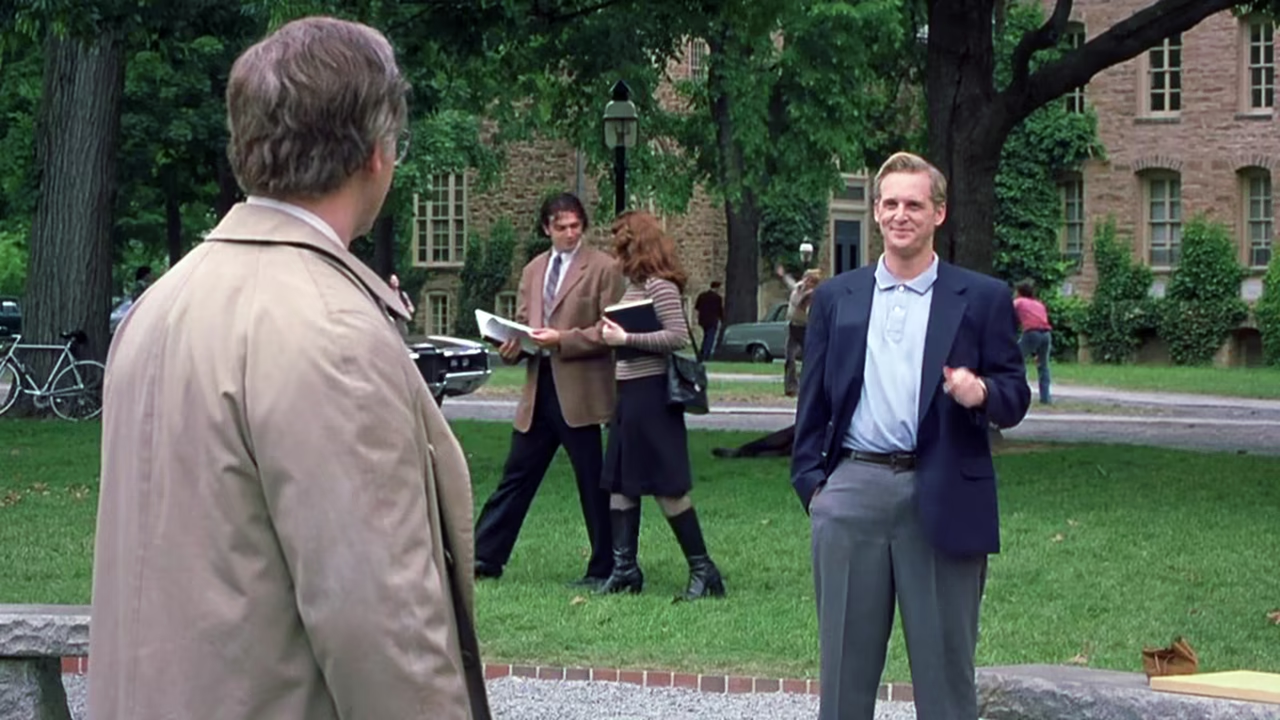
Hansen suggests that John avoids classes because he is afraid of competition, then challenges him to a game of Go. John loses, and Hansen is visibly pleased with his victory. Unable to accept defeat, John insists the game is flawed and storms off, arguing Hansen shouldn’t have won as John, playing first, believed his strategy was perfect. Frustrated by this incident, John holes up in the library for days until Charles drags him out for a meal, knowing John would forget to eat when deeply immersed in his studies.
Struggling to find a suitable topic for his doctoral thesis, John’s frustration is evident. The library window is covered with his frenetic scribbles—calculations attempting to model diverse scenarios like soccer plays, pigeons vying for crumbs, and a woman pursuing a purse thief—which appear disconnected to Charles. John articulates his core intellectual puzzle by pointing out that in competitive situations, there is inherently a loser. While Charles dismisses this as common knowledge, John is captivated by the challenge of devising a framework for equilibrium where no party necessarily loses, a concept with potentially revolutionary implications across numerous disciplines.
Mathematical Breakthrough Brings Recognition
They head to a bar to clear their heads, only to run into Hansen and his friends. The group dares John to approach a woman. He accepts, but lacking social skills, they sit in awkward silence. John worsens matters with an inappropriate comment, prompting the woman to leave. His classmates laugh at his failed attempt. Later, Professor Hellinger reprimands John for his consistent absence from classes and lack of published work, contrasting him with classmates who have already produced new papers. John defends his pace, explaining he needs more time to develop his original work on manifold embedding and promising bargaining strategies. While Hellinger is aware of John’s ambition, he remains skeptical of tangible results.
Around this time, at a faculty gathering, John observes a poignant tradition: colleagues place pens before an esteemed, aging professor, a profound mark of respect for his contributions. Mounting pressure to produce something groundbreaking, coupled with the fear of failure, pushes John to a breaking point. In a fit of intense frustration, he repeatedly slams his head against the note-covered window, making his forehead bleed. Charles, alarmed by John’s escalating distress, intervenes. In a desperate and unorthodox attempt to break John’s fixation, Charles shoves John’s desk out the window, sending it crashing to the ground. The shocking act unexpectedly makes John laugh, momentarily relieving his overwhelming tension.
At the bar again, John is absorbed in his papers as usual. Hansen and his friends approach and start needling him. From across the room, Hansen once more claims that a woman is staring at John, seemingly interested. He jokes that she will lose interest if John speaks, which seems likely given his previous attempt. This time, however, John just smiles. The situation sparks a sudden eureka moment. He immediately leaves, thanking the woman because the scenario helped him discover something significant. Filled with urgency, he rushes back to his room to write down his breakthrough.
The following day, John, with considerable anxiety, submits his thesis on governing dynamics to Professor Hellinger. After reviewing it, Hellinger declares John’s work a revolutionary breakthrough, asserting it could secure him a prestigious position anywhere. Subsequently, John is offered a position at the esteemed Wheeler Laboratory and is asked to recommend two team members; he chooses his Princeton colleagues Sol and Bender. Outside the professor’s office, Charles appears visibly overjoyed by John’s triumph.
Government Work, Rising Paranoia
Five years later, American intelligence agents summon John, now holding a doctorate, to the Pentagon. Escorted to a data center, he faces encrypted codes that have stumped agents, even with computers. Studying the numbers, John stands transfixed for a long time, eventually recognizing unusual patterns as coordinates of cities on aircraft routes. He then asks the General whether Russia might be preparing to take action. None of the agents respond to his question. Instead, they order the guards to escort John back to the lab. Meanwhile, a man watches him silently from a distance.
Upon returning to MIT, his two colleagues remind him of his scheduled class. During the session, he meets Alicia Larde (Jennifer Connelly), an attractive and intelligent student who seems interested in him. As he heads home, someone is waiting for him outside the campus. It is a Department of Defense agent named William Parcher (Ed Harris), the same man who had been observing him at the Pentagon. Parcher takes John to a secret location and warns him not to share any information about the high-level operation.
Explore More:
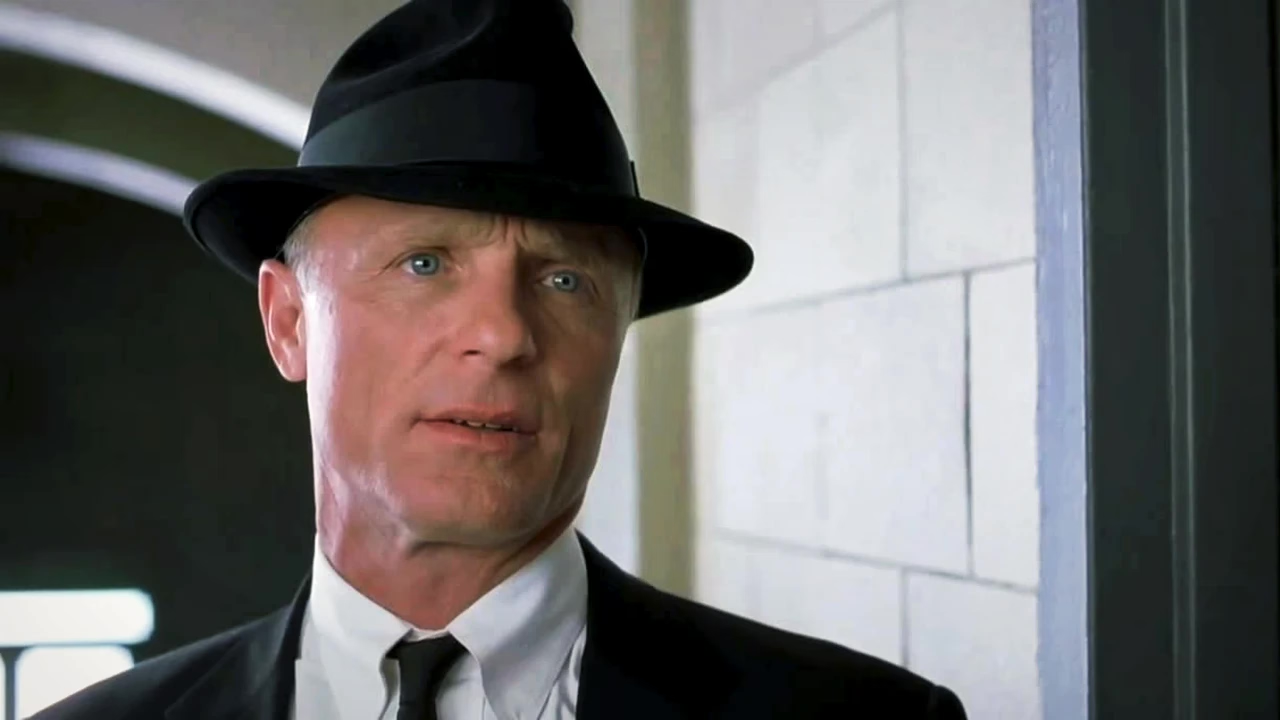
Parcher explains that the Soviets are allegedly planning to detonate a portable atomic bomb on U.S. soil and that their communications, hidden in ordinary periodicals, are key to uncovering the plot. John’s clandestine task is to meticulously examine newspapers and magazines to find and decipher these hidden codes. A code stamped on John’s hand serves as proof of his involvement. The next day, Alicia visits John’s office to escort him to class, but he still refuses to teach. Instead, John awkwardly invites Alicia to dinner with the governor. Despite his social awkwardness, Alicia accepts his invitation. The dinner brings John and Alicia closer, John feeling Alicia is “peculiar” like himself.
John’s room becomes cluttered with magazines and newspapers. To his eyes, these magazine clippings are filled with hidden codes. He mails his findings to the Department of Defense, constantly feeling followed. While observing birds in the park, John reunites with his old roommate, Charles. Blushing shyly, John mentions that he’s now dating someone and considering marriage. Not long after, John and Alicia are married. During the wedding, Parcher watches them from a distance.
While John is mailing a letter, Parcher suddenly picks him up, claiming agents are following them. Shockingly, Parcher’s car comes under fire. This terrifies John. Parcher pulls out a gun and orders John to shoot back. When John can’t bring himself to do it, Parcher returns fire while driving. The shootout kills two pursuers, leaving John deeply traumatized. At home, Alicia is waiting for him, noticing his exhausted and disheveled appearance. She urges him to talk about what happened, but John locks himself in his room, ignoring her.
The next day while teaching, John displays strange behavior. He appears confused and frightened, bewildering his students. Parcher approaches John again. John expresses his desire to resign because he’s worried about Alicia, who is now pregnant. Unfortunately, he can’t quit; Parcher subtly threatens to withdraw protection if John stops. In the days that follow, John grows increasingly paranoid. At home, he vigilantly checks windows, instructs Alicia to turn off lights, and suggests she stay at her sister’s.
Alicia repeatedly questions why John is behaving this way. John can’t explain but insists Alicia go to her sister’s, promising an explanation later. When John attends a seminar at Harvard University, he again appears unfocused and suddenly becomes nervous while presenting. When two men enter the back of the room, John panics and flees, confusing the seminar participants. The people pursuing John are from a psychiatric hospital, led by psychiatrist Dr. Rosen (Christopher Plummer).
Diagnosis Reveals Shattering Truth
John tries to escape, believing they are Soviet agents, but they forcibly sedate and commit him to a psychiatric facility. When John regains consciousness, he finds himself restrained in a mental institution, terrified and experiencing hallucinations. During Alicia’s visit, Dr. Rosen informs her that John has paranoid schizophrenia, explaining his delusions of grandiosity and persecution. Dr. Rosen reveals that key figures in John’s recent life, his roommate Charles and the government agent William Parcher, are hallucinations—products of his illness. He also explains that John’s condition is serious and may not be curable.
Alicia, stunned by these revelations, confirms that John often spoke of Charles, though she had never met him. Her distress deepens when Dr. Rosen mentions that Princeton University has no record of a student named Charles Herman during John’s time there. Seeking understanding, Alicia later goes to John’s secluded office/workspace and is horrified to find it entirely covered with interconnected newspaper and magazine clippings, a physical manifestation of his obsessive code-breaking delusions.
She questions Sol and Bender, who explain that John has always considered himself a code breaker, though they had noticed something strange about his behavior. His condition had apparently worsened, evidenced by his increasing fearfulness. Alicia visits the apparently abandoned place where John usually sent his letters. She discovers that no William Parcher exists in the Defense Department and finds the unopened documents John had delivered to the secret mailbox.
Alicia, dearly missing her husband, visits him at the psychiatric facility. John tells her that he might still be targeted by the Russians and asks for her help to leave the mental hospital so he can meet William Parcher. At this point, Alicia gently tries to help John understand by explaining that she searched for Parcher but found no such person in the Department of Defense. She then reveals the unopened letters that John had meticulously “delivered” to the secret mailbox, which she had recovered from the abandoned drop-off location. This moment forces John to confront the tangible evidence that his supposed government work was merely a hallucination.
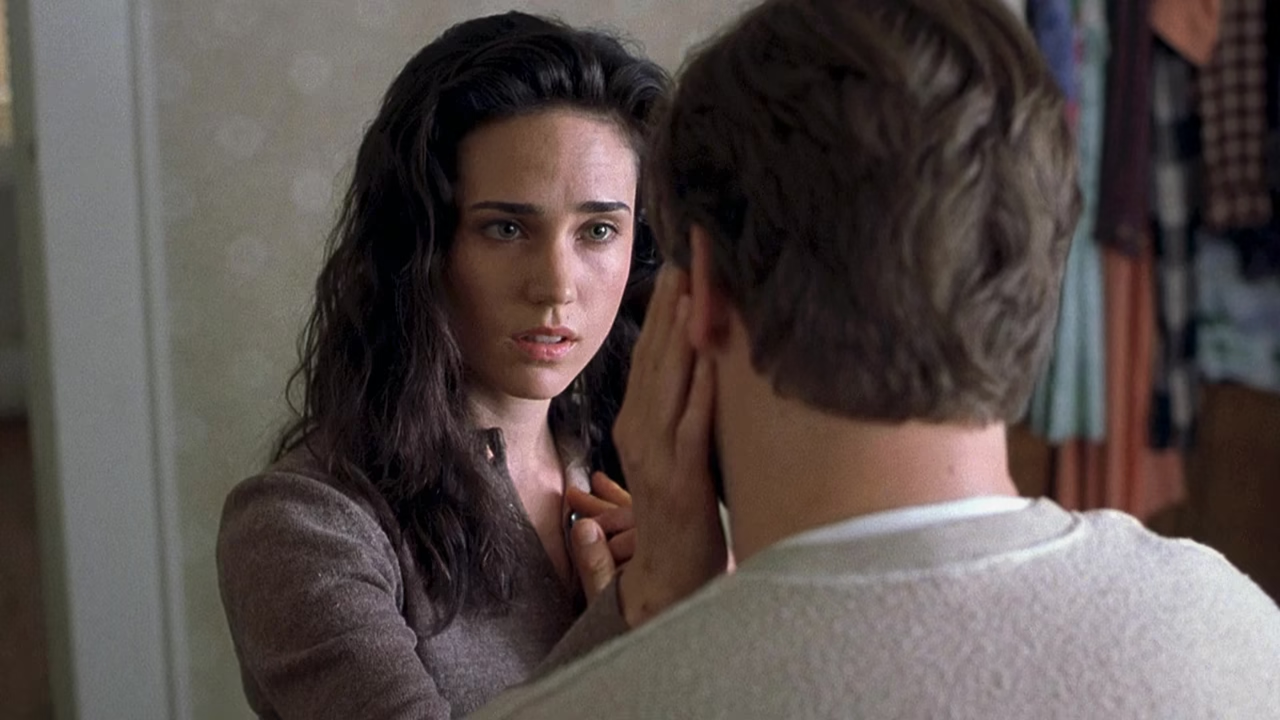
Alicia painstakingly explains that his entire experience as a government code-breaker was actually the result of his illness, which had caused a complex hallucination. She tries to help him understand the difference between his imagined world and reality, but she eventually breaks down in tears because he is unable to accept this devastating truth. John remains in the psychiatric facility, where he undergoes insulin shock therapy along with other treatments. After receiving intensive care, John is eventually released. Although the medication reduces his delusions, it also leaves him feeling lethargic and emotionally numb.
Recovery Toward Nobel Prize
Sol visits him at home and encourages him to embrace a more peaceful lifestyle, reassuring him that it is perfectly acceptable not to return to the high-pressure environment of the university. Alicia patiently cares for John, accepting him as he is. She helps him adjust to an ordinary life and encourages him to socialize. However, the heavy medication takes a toll on John’s cognitive abilities and emotional responsiveness, including his sexual drive, leading to frustration and distance in his relationship with Alicia. Believing medication impairs his intellect and connection with his wife and child, John secretly stops taking it. Consequently, his delusions, including Parcher, gradually return.
Parcher reappears in his delusions, confronting John again. Although John tries to convince himself that Parcher isn’t real, the hallucination insists that the psychiatrists’ warnings were lies. This deepens John’s inner conflict, leaving him visibly torn between reality and the increasingly persuasive pull of his imagined world. One day, Alicia notices something strange in their backyard. She finds an empty shed filled with newspaper clippings, identical to those from years before. Terrified, Alicia immediately calls Dr. Rosen. She rushes to leave, realizing that John’s condition has relapsed.
Meanwhile, as John’s relapse intensifies, his delusion of Parcher becomes more menacing, particularly when Alicia discovers the shed. During a crisis, as John struggles against Parcher’s menacing influence (implying a threat to Alicia), he recognizes the danger he might pose. John battles with his own mind. He stops Alicia’s car as she’s leaving, explaining he can now differentiate reality from illusion because his hallucinatory figures never age. Afterward, they consult with the doctor about continuing treatment, but John refuses. He deliberately avoids medication, as it makes him emotionally unresponsive to his wife. He also questions the point of treatment if there’s no guarantee of recovery. He wants to find a solution for his illness on his own.
John, feeling he could be dangerous, tells Alicia she shouldn’t stay, but she remains steadfast in her support. Several months later, John returns to Princeton University to meet his old rival, Martin Hansen, who is now the head of the mathematics department. John humbly admits that Hansen, with his successful and stable career, has ‘won’ their old unspoken competition. Hansen, however, dismisses the notion of winning or losing, affirming that he had always respected John and considered him a friend. John asks Hansen for permission to stay at Princeton, hoping the familiar environment will aid his recovery.
Unfortunately, Parcher’s continued presence in his delusions occasionally agitates him. In subsequent years, John visits the campus, still shadowed by delusions but now able to ignore them. Over time, he regains the trust of the academic community and begins teaching again. Decades later, a student approaches him for advice on a theory, marking his quiet return to intellectual life. Eventually, he learns his earlier work on equilibrium has earned the Nobel Prize for its groundbreaking economic impact. At the ceremony, he credits his wife for everything, stating she was his reason for enduring and the purpose behind his achievements.





